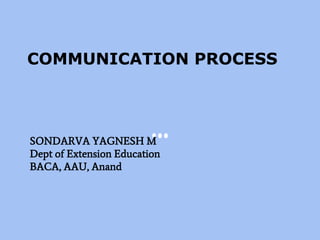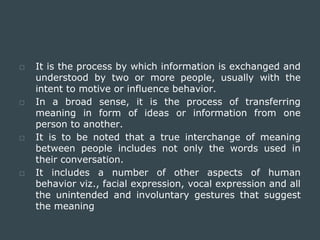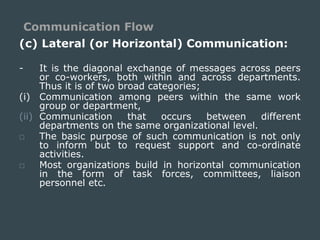Communication involves the exchange of ideas between two or more people through a message to gain a common understanding. Effective communication requires clear language, appropriate channels, consideration of the audience, and feedback. Barriers like unclear messages, improper channels, lack of audience understanding, and absence of feedback can impede communication. Body language, dress, credibility of the communicator, and treatment of the message also impact communication success. Communication flows downwards from superiors to subordinates, upwards from subordinates to superiors, and horizontally between peers.




































